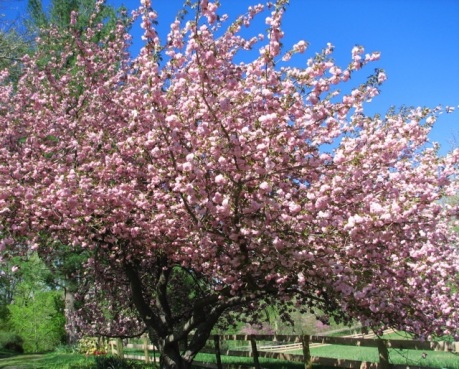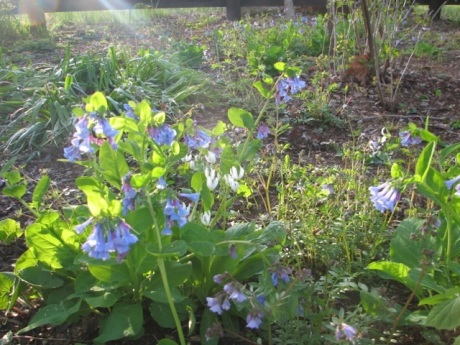Where do we begin if we want to grow a creature-friendly garden? What are some resources at our disposal?
I collect seeds from my garden and the gardens of like-minded gardeners. A great resource for me is the Prairie Moon Nursery, which you can find online. It sells only native seeds and plants, which takes the guesswork right out of shopping. If you click on any given seed or plant that interests you, the website will give you information about whether it is native to your region and the conditions it needs to grow.
Penstemons mixed in with my beautiful Siberian Iris. Iris are about the only non-native plant I have because they are beautiful and not invasive.
A must-read book that helped me get over my fear of anything with more than four legs is Douglas W. Tallamy’s Bringing Nature Home. The index contains a list of host plants native to different regions. And although I could probably do without a spider sidling up to me while I’m relaxing and watching TV, I’ve actually developed quite a fondness for creepy crawlies.
Pollinators of Native Plants by Heather Holm is a fantastic and beautifully photographed reference. The Brooklyn Botanic Gardens’ Native Alternatives to Invasive Plants is also a good resource. If you’re wondering what to grow, there are actually many books available on the subject of “plant this, not that.” For instance, Designing Gardens With Flora of the American East by Carolyn Summers is tailor-made for me, a Virginia inhabitant.
If you’re fortunate enough to have a native-plant society in your area, join it. You’ll be astonished by how much you’ll learn and how easy it is to have a positive impact on the wildlife in your area.
Here’s my cherry blossom; I hope it outlives me.
It’s too late in the year to think about sowing seeds that require cold stratification (winter sowing), but if you’re willing to do the research pertaining to your area, you can find a local nursery that specializes in native plants.
This is Foxglove, who had a baby just a few days after this photo was taken.
February is for me the quietest month for gardening. The cold is too hard on my fingers, and I’ve completed my winter sowing project. In March, I will run outside and cut down last year’s perennials that I like to leave over the winter. I think they look beautiful, and, believe it or not, they provide shelter from the cold weather for moths and butterflies in various stages of life.
I look forward to spring and wish everyone happy gardening!
PETA member Jasmin Ponti became an accidental gardener after inheriting an overgrown yard full of plants that she couldn’t identify and didn’t know what to do with. She became a Master Gardener and was fortunate enough to meet some wonderful ladies who introduced her to the concept of using more natives in the landscape.
Jasmin also learned that everybody thinks his or her way is the only way to garden! For Jasmin, that means providing food and habitat for animals. It keeps them happy, and she gets to see the beautiful show.








